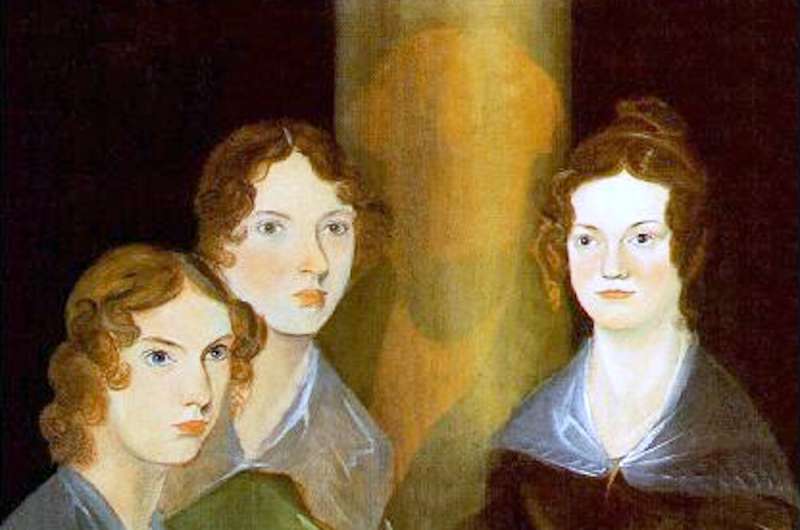Emily Brontë's death needs to be radically reimagined—an expert explains

Novelist Charlotte Brontë was devastated when her sister Emily died from tuberculosis on December 19, 1848.
Emily's only novel, "Wuthering Heights," had been published just a year earlier. In a letter to her publisher, composed on Christmas Day, Charlotte wrote that Emily was:
"Rooted up in the prime of her own days, in the promise of her powers … sweet is rest after labor and calm after tempest."
The popular account of Emily's last day envisions her dying on the sofa in the family's dining room (now the home of the Brontë Parsonage Museum in Haworth, Yorkshire), stubbornly refusing to take to her bed. But ambiguity surrounds the precise details of her death.
Because there is no writing by Emily about her illness, Charlotte's account has become the dominant one. In letters from October to December that year, she documented Emily's decline in detail.
Accepted at face value, they suggest that Emily was stubborn in sickness. Charlotte describes trying to persuade her sister to permit medical assessment and treatment and writes of Emily's consistent refusal.
Besides a "mild aperient—and Locock's cough wafers" (a product that claimed to offer "instant relief" to "all disorders of the breath and lungs"), Emily rejected all other forms of medical intervention, dismissing at least one proposed treatment (homeopathy) as a "form of Quackery". She declared that "no poisoning doctor" should come near her.
To many biographers, Emily's behavior has not only been interpreted as stubborn, but as evidence of a "violent display of denial" about her illness and as "brittle contempt" for her sister tantamount to "a subtle emotional blackmail."
But there is another way to understand Emily's resistance to aid and refusal to speak with Charlotte?
Tuberculosis and the Victorians
Today tuberculosis is understood as a highly contagious disease of the lungs that attacks the body's organs and circulatory system. But in the 1840s, medical knowledge of the disease was speculative.
It was only in 1882, many years after Emily's death, that Robert Koch showed that tuberculosis was caused by infection by a virulent bacteria.
By late 1848, tuberculosis had claimed the lives of three Brontë children: Branwell, Maria and Elizabeth.
Through the fictional figure of Helen Burns, Charlotte immortalized her older siblings in Jane Eyre. Helen tells Jane: "We all must die one day, and the illness which is removing me is not painful: it is gentle and gradual; my mind is at rest."
When Emily began displaying symptoms she, like Charlotte, had access to their father's copy of Graham's Domestic Modern Medicine. The book describes in graphic detail the stages of the disease and the patient's prognosis.

From the book Emily would also have known that, despite Charlotte's suggestions, there was no cure.
As historian of medicine Carolyn A. Day notes: "Once the disease was plainly evident, the patient had passed the stage at which medical authorities believed they could affect any alteration."
In Wuthering Heights, Emily writes of a similar tubercular situation. Dr. Kenneth warns Hindley that he can no longer help his sick wife, as "his medicines were useless at that stage of the malady."
Brontë sibling tensions
Charlotte does not explain why Emily refused to speak of her illness.
One reason could be that, as Charlotte's letters show, she was revealing intimate details of her sister's ill health without Emily's consent.
Intrusion into Emily's privacy was a pattern for Charlotte and suggests a logical reason for Emily's resistance to sharing with her older sister. Charlotte had previously invaded Emily's privacy when she had read her private notebook containing the poems that inspired the 1846 collection Poems by Currer, Ellis, and Acton Bell.
The letters also reveal tension about Emily's behavior. In Charlotte's mind, Emily was "unfit" to maintain her normal routines (sitting up late and insisting on feeding her dog Keeper and their sister Anne's dog Flossy). Charlotte was keen to make herself the nurse and her sister the patient—Emily did not want that.
Rewriting Emily's death
The trauma Charlotte suffered from Emily's passing was compounded by Anne's subsequent tuberculosis diagnosis.
Anne accepted her elder sister's "remedies," but a letter from a specialist to Charlotte advises her not to indulge false hope about a recovery. Anne died in May 1849.
The loss of three siblings within nine months (their only brother, Branwell, had died just three months before Emily) must have been overwhelming for Charlotte.
Still, in the aftermath of Emily's death she knowingly misrepresented her sister's final months.
Charlotte misdated and edited Emily's poetry in the posthumously published Literary Remains of Ellis and Acton Bell, falsely presenting the poem No Coward Soul is Mine as "the last lines my sister ever wrote" when she "knew it was not".
Emily's behavior during her illness may have been (as novelist Stevie Davies puts it) "lacerating to those who loved and cared for her," but she was perfectly within her rights to behave the way she did. Neither Emily nor Victorian medicine could control how tuberculosis ravaged her body. But rather than judging her behavior as selfish or stubborn, we should view Emily's suffering with more compassion, appreciating her strength of character in the face of her own mortality.
Provided by The Conversation
This article is republished from The Conversation under a Creative Commons license. Read the original article.![]()





















